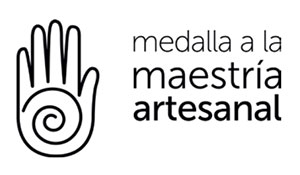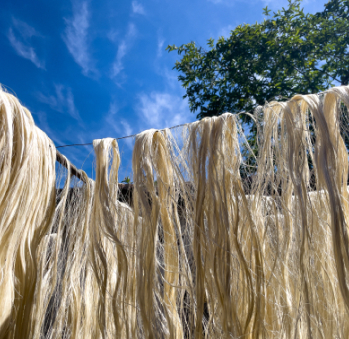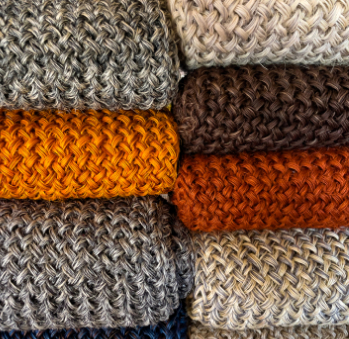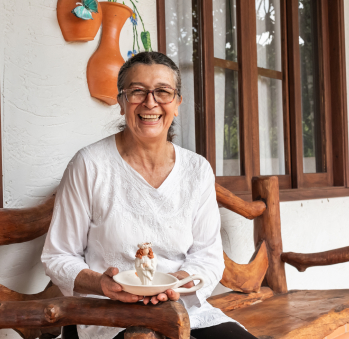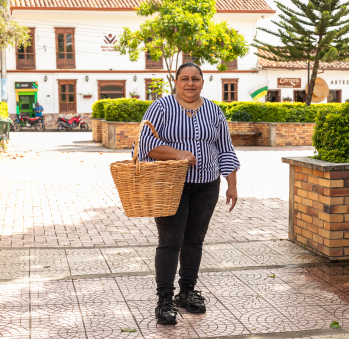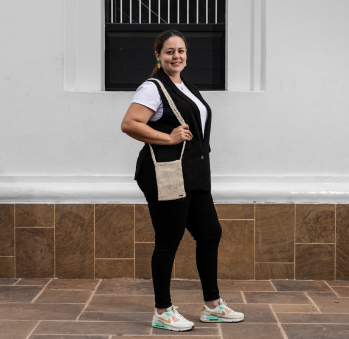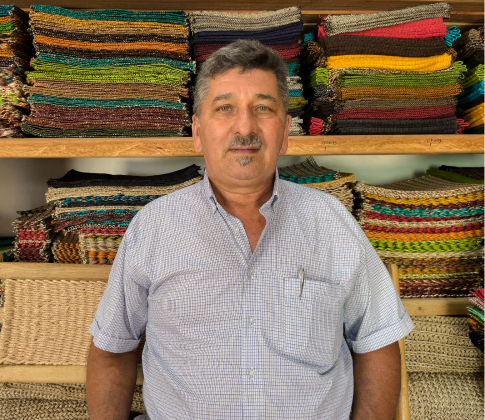María Patrocinio Pimiento Ortiz
SCHEDULE YOUR VISIT
Carrera 11 # 8-20
3168730939
areaguacuriti@gmail.com
@areaguafique
@Areagua-811970495636891
María lived among sacks for almost 30 years. It was what she had learned to do at home, and the only thing there was to do at all. However, since she did not like to card, or “open”, the wool, she learned to spin it, weave it, and make skeins from it. These skills would eventually further her exploration of the vast universe of weaving.
She remembers the arrival of a Colombian-German mission to Aratoca in the early 1980’s as a turning point in her career. Through an agreement it held with Artesanías de Colombia, the mission was able to show the community’s craftspeople new paths they could take with their trade by working with fique. Nonetheless, some setbacks got in the way and, although María had set up a house of crafts in Curití alongside 20 other people, they were unable to really get it up and running. Thus, she ended up making sacks again. Still, the seed had already been planted: she had not given up just yet, and so began crafting mochila bags and hats. She started this new process by selling fique, which she wound up and put into her cañuelas, known also as spools. Her fique began catching people’s attention due to its excellent quality.
Although her first venture had not worked out, this one would, bringing together a group of craftspeople from Curití, Barichara, and Mogotes. They associated under the Areagua name, which she still cherishes. This name fills her with pride since it managed to win the Medalla a la Maestría Artesanal through her very own hands’ work.
Her secret is the fique’s dyeing: a process she has perfected over decades of devotion. Her nephew, Hugo Fabián, heir to her skill, has dedicated the last few years to try and record his aunt’s crafting process. Even so, his endeavor has not yet been successful: he has not been able to get her to describe the exact quantities of her formulas, nor to stop her from measuring things by “sprinkles,” which she compares to the pinches that are used in cooking.
Everything is a bit magical, for, according to María, the sun’s radiance and “happiness” produce the best vivid and pastel hues, while gray and black dyes are best used in darker days. Although “Patro”, as she is called by her loved ones, is too modest to admit it, she is the teacher of many, the “mama bear” of Curití. She acknowledges, celebrates, and passes on her legacy and knowledge without a shadow of envy. She only wishes everyone could grow as she herself once did.
Craft






Artisans along the way
Artisans along the way
No puede copiar contenido de esta página








































